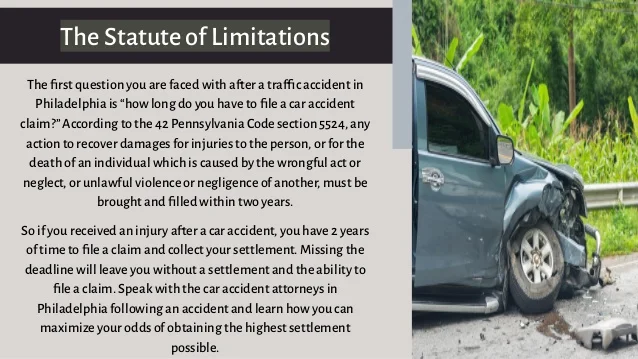Like in many states, Colorado also allowed those people mixed up in car incidents to file for indemnity. However, if you are the injured party, you can file for indemnity at the provided time frame. The timeframe or grace period for filing these claims is called the statute of limitations. Every country mandates an independent statute of limitations.
According to law firm Cheney Galluzzi & Howard, if the incident took place somewhere in Colorado, you need to inform yourself regarding the state’s statutes of limitations. To inform you about this issue, here are the pertinent details concerning Colorado’s statute of limitations.
The statute of limitations in a nutshell

As said earlier, a statute of limitation is a timeframe provided so you can file an indemnity claim to the court. Once the stated time prohibition is over, you’re prohibited from bringing your lawsuit to court.
You cannot just bring your legal claim anytime you like. You should obey Colorado’s law and file it on or before the reglementary duration. The ratio behind the imposition of the statute of limitations is to give people a guarantee that they won’t sleep on their rights or raise the same as one mere afterthought. Also, it’ll serve its purpose to have enough evidence for both sides to reach a resolution.
The Centennial State strictly implements the statute of limitations using various policies. The government also made legal exceptions associated with that grace period. Sometimes, you’ll observe twenty-four months as your timeframe. The increase or decrease in the period depends on the circumstances and condition of the incident. If you’re not confident with matters related to the case, you might want to pursue legal assistance from a jurist.
What is Colorado’s statute of limitations for car accidents?
The statute of limitations for car incidents in Colorado is currently thirty-six months. You have thirty-six months commencing from the exact day of the incident prior to filing for compensation. If you didn’t make it within the given duration, your opponent could use that fact to dismiss the case. The court with jurisdiction has the power to close it on the ground that the statute of limitation has set in. However, if your lawsuit opposes a government institution, there’s a high possibility that the statute of limitations could be less than thirty-six months. However, this is just an exception to the general rule.
There is a regulation in Colorado that sets forth the required time frame for filing claims for car incidents within the state. It says that those incidents that lead to physical harm to people involved shall be forwarded to the lawful tribunal within thirty-six months to start the case. Moreover, if the incident resulted in an unjustified death of a party, the limitation becomes two years.
Who is eligible to file the statute of limitations for car accidents?

Anyone who gets caught up in a car crash could go to court and submit their indemnity claims within thirty-six months. If you are directly associated with that car crash and also suffered from lacerations or wounds, you are legally allowed to file for indemnity claims. Commuters, motorists, strollers, bikers, plus those people who had a role in that car mishap must also adhere to the statute of limitations. They are demanded to bring their case legally following the timeframe of thirty-six months to win the indemnity.
What’s the difference between reporting a car accident and the statute of limitations?
The statute of limitations isn’t related to the timeframe given to report car or road mishaps. You are always expected to report a car accident or mishap immediately to the state’s enforcement officers upon witnessing it. The statute of limitations is solely made for the systematized obtaining of compensation.
There is also another policy of Colorado that orders all commuters to relay minor and major car incidents to enforcement officers quickly, especially if the said mishap caused severe consequences like physical trauma or property destruction. Even if both parties agreed to just ignore it or if it didn’t lead to physical trauma or property destruction, the statute of limitations still comes into play.
You have the right to legally document your indemnity case following the set grace period in Colorado. Originally, the timeframe was thirty-six months. However, you’ll need to obtain the advice of an attorney to see if the incident related to falls under an exception that lessens the grace period.
When to start counting the statute of limitations for a car accident
You shall start counting the statute of limitations upon the date of the actual incident. You need to file it before a legal tribunal with jurisdiction over the case. You also need to follow the recommended thirty-six months deadline. You are expected to personally file the incident in the tribunal of Colorado.
Once you successfully filed the case within the set timeframe, the settlement will now be in the hands of the court. You can expect the proceedings to roll with minimal chances of being dismissed on a mere technicality.
Ensuring your claim earns merit in court is critical because this will make or break your cause of action. This is also where the resolution of the issue lies. Take time to serve the opposing party with copies of summons, affidavits, or replies. Give them time to confront their accuser and represent their side before you expect an adjudication of the case.
Your primary target is to make it to the deadline. You shouldn’t stress yourself about the proceedings of the case at the moment. When you succeed in meeting the statute of limitations, you can be confident that the case becomes active, rewarding yourself with a higher chance to obtain what you should have.
Contact a Colorado car accident attorney for help

You need to know your rights if you’re involved in a car accident. This is especially true if you sustain injuries or there were damages to your property. However, it’s always easier said than done, especially if there are provisions like the statute of limitations that you should be mindful of. In this case, it’s best to pursue a lawyer to guide you. They know how to represent you in the tribunal and assist you in claiming what’s supposedly yours.


